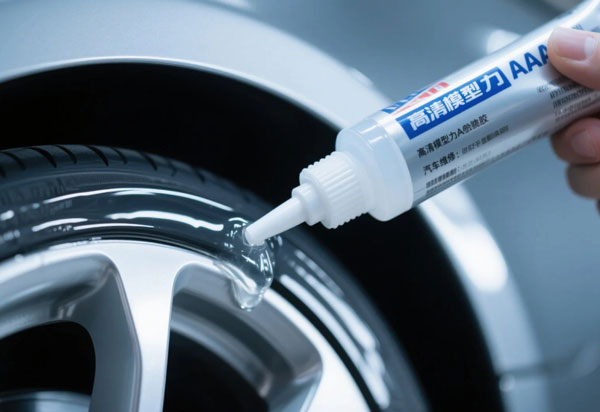 Home / News / Industry News / What is the difference between auto body adhesives and sealants?
Home / News / Industry News / What is the difference between auto body adhesives and sealants? 2025-10-15
Automotive body adhesives and sealants have become indispensable materials in modern automobile manufacturing and repair. As the automotive industry's demands for lightweight, high-strength, and corrosion-resistant properties continue to rise, choosing the right adhesive product becomes increasingly important. However, many car enthusiasts, repair technicians, and even engineers often confuse automotive body adhesives with sealants. This article will explain the differences between the two from multiple perspectives, including composition, performance, applications, and application requirements, to help you correctly use them in automobile manufacturing, repair, and maintenance.
Automotive body adhesives are a type of polymer material specifically used to bond structural parts of automotive bodies. Their primary function is to replace traditional welding or bolting, achieving high strength, lightweight, and durability.
1.1 Main Ingredients
Common materials used in automotive body adhesives include polyurethane (PU), epoxy resin, acrylic acid, and modified silicone. These adhesives form a strong bond through chemical reactions or physical curing, capable of withstanding the vibration, shock, and temperature fluctuations experienced during vehicle operation.
1.2 Core Performance
High Bond Strength: Securely bonds a variety of materials, including steel, aluminum alloy, and composites, with shear strength reaching tens of MPa.
Vibration and Shock Resistance: Vibration and shock generated during driving are effectively dispersed by the adhesive, reducing the risk of weld or bolt fatigue.
Weather and Corrosion Resistance: Resists UV, moisture, and chemical corrosion, extending vehicle life.
Lightweight Design: Reduces welds and metal connectors, reducing overall vehicle weight and improving fuel economy.
Multi-Material Compatibility: Bonds metal, composites, plastics, and glass, meeting the needs of new energy vehicles and composite vehicle bodies.
1.3 Typical Applications
Bonding of vehicle body panels, including doors, roofs, and fenders.
Reinforcement of chassis and structural components to enhance vehicle rigidity and collision safety.
Bonding of lightweight components, such as aluminum alloy or carbon fiber composite structures.

Compared to automotive body adhesives, sealants are primarily used for waterproofing, dustproofing, and preventing gas leaks. Their core function is to fill gaps and form a continuous seal, rather than to support or reinforce structural components.
2.1 Main Ingredients
Sealants are typically based on silicone, polyurethane (PU), or acrylic, emphasizing flexibility, aging resistance, and elasticity over high-strength bonding.
2.2 Core Performance
Excellent elasticity: They can deform with the thermal expansion and contraction of the vehicle body, maintaining a long-term seal.
Waterproof and dustproof: They form a continuous seal, preventing the penetration of rain, dust, and air.
High weather resistance: They are resistant to high and low temperatures and UV rays, and are not prone to cracking.
Easy application: Most sealants can be applied using an extruder, making caulking and finishing easier.
2.3 Typical Applications
Edge sealing of windows and sunroofs.
Waterproof sealing of doors and trunks.
Dustproof and waterproof sealing of engine compartments and lighting fixtures. Filling gaps in body trim or glass.
Automotive body adhesives focus on structural bonding, while sealants provide elastic sealing and protection. In modern vehicles, these two types of products are often used in combination: structural components are first secured with adhesive, followed by sealants to address gaps, ensuring both a secure and airtight body.
3.1 Key Points for Automotive Body Adhesive Application
Surface Preparation: Clean, degrease, and polish to improve bonding.
Temperature and Humidity Control: High-performance adhesives are sensitive to the environment and require strict application conditions.
Curing Method: Some adhesives require heating or room temperature curing, requiring component positioning prior to curing.
Specialized Equipment: Automated dispensing or precision coating equipment is used on the production line to improve efficiency and quality.
3.2 Key Points for Sealant Application
Surface preparation requirements are minimal: Maintaining a clean surface is essential.
Elastic Curing: Cures at room temperature, simplifying application.
No Support Required: No component fixing is required after application; the focus is on continuity and sealing. Secondary trimming is possible: Use a scraper or your fingers to smooth the seal line for an aesthetically pleasing and reliable seal.
Structural Component Bonding: For key structural components (door frames, chassis, and fenders), use high-strength automotive body adhesives to ensure rigidity and safety.
Waterproofing and Sealing: For gaps in windows, sunroofs, or lighting fixtures, use sealants to ensure water resistance, dust resistance, and elasticity.
Combination Use: Modern vehicles often use an "adhesive + sealant" combination: adhesive is first used to secure the structural components, followed by sealant to fill the gaps, achieving both strength and sealing.
Material Matching: For aluminum alloy or composite body panels, choose an adhesive with matching performance; sealants should focus on weather resistance and elasticity.
Automotive body adhesives and sealants have distinct functions, but they are inseparable in modern vehicles. The former ensures structural strength and safety, while the latter provides waterproof, dustproof, and elastic protection. Understanding the differences between the two and choosing and combining them appropriately can significantly improve vehicle durability, safety, and the user experience. With the development of lightweight materials, composite materials, and new energy vehicles, the performance requirements for adhesives and sealants will continue to rise. Understanding the differences between them is crucial for manufacturers, repair personnel, and even consumers.
As a professional distributor of automotive body adhesives, Polyton has been dedicated to providing high-performance adhesive solutions for the automotive manufacturing, repair, and parts processing industries for many years. We offer high-quality adhesive products that combine weather resistance, vibration resistance, and durability. We also provide customers with professional application guidance and technical support to ensure optimal performance of automotive body adhesives in practical applications, helping companies improve production efficiency and vehicle body structural reliability.